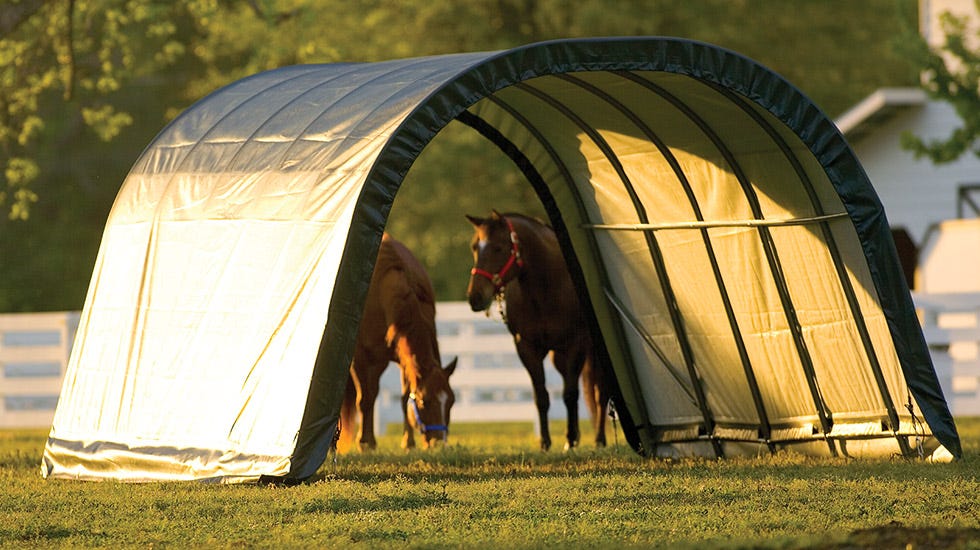While the summer brings fun in the sun for us, it’s not quite the same for our friends in the animal kingdom. For example, like us humans, some animals are prone to sunburn. Other animals, like horses are prone to overheating. Protecting animals in the heat is a top priority for farmers, trainers, and anyone who works with animals. While animals in the wild can cool themselves down and stay out of the sun, animals in a pen or a pasture sometimes don’t have that luxury. So, what can you do to keep horses and livestock safe from the heat and sun during the summer months?
How Exposure to UVB Rays Adversely Affects Animals
Some animals have natural ways of staying safe from the sun’s harmful ultraviolet rays, which cause sunburn in both humans and wildlife. But an overcast sky can be deceiving. As much as 80 percent of UVB rays can pass through the cloud cover, making a sunburn possible even on a cloudy day. While too much sun exposure that causes sunburns increases your chance of developing skin cancer and other skin conditions, it can cause different damage in livestock.
Animals with white or light-colored coats or lots of pinkish skin are worst affected. Areas of burned skin will be red and raised and as it peels, if severe, can become infected especially as the animal may scratch it. Not only would sunburn make the animal feel discomfort but it will affect their overall productivity to some extent. Nutrients in the body that needed for optimal development and performance are instead used to repair the damaged skin. In a dairy cow, for example, it can lead to decreased milk production. Also, cattle on the range with light-colored skin around the eye area are commonly developing what is called “cancer eye.” Not only is it terribly uncomfortable for the animal, it also makes its meat unfit for consumption.
What’s more, exposure to the sun can lead to a type of sunburn called photosensitization. It’s a serious skin condition that generally affects nonpigmented skin that dies and sloughs away because the damage is much deeper than ordinary sunburn that affects just the top layers. Since the radiation from UVB rays can penetrate their wool, sheep can be burned even if they are not sheared. Damage from the sun can affect the quality of their wool.
Also, grazing animals like sheep can get a condition termed secondary photosensitization, or secondary sunburn. Not only is it caused by the sun, but and their diet. It is considered secondary sunburn because it also indicates there is something affecting the liver or if there's an abundance of certain plants in the sheep's diet.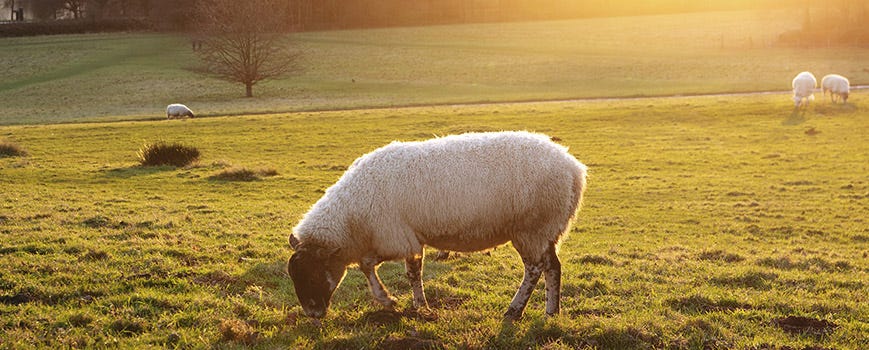
How the Heat Can Harm the Health of Animals
During heat waves, farmers face a challenge with both high temperature high heat index. Farmers need to take precautions for their animals to minimize the risk of injury and sickness from prolonged exposure to high temperatures and humidity. Although most animals can transfer internal heat to the outside of the body by sweating and panting, heat stress can lead to a reduction in animal performance and efficiency.
For example, Dairy cows can produce less milk and be more prone to disease and parasites. Horses that run in the pasture constantly generate heat. Without an easy way to cool down, horses can overheat. Once they display such symptoms or reach internal temperatures of 105°F are higher or show other symptoms, the risk of heat exhaustion, heat stroke, or even death greatly increases. However, pigs do not sweat and have relatively small lungs. When a pig’s internal temperature increases to 43°C (or 109.4°F), it reaches a point where it can no longer increase moisture loss through increasing respiration and sweating. Extreme temperatures take their toll on pig herds, with heat stress and heat stroke being prominent causes of weakness, diarrhea, and acute distress.
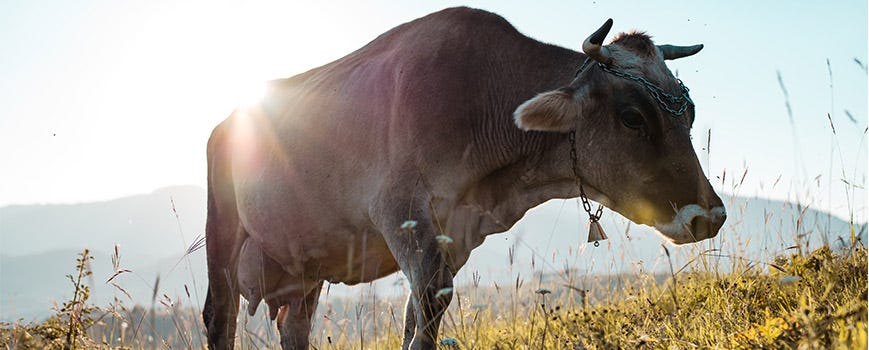
How to Protect Animals from the Sun and Heat
Farmers must implement a variety of management practices that will offset the effects of high heat and ensure the health of their animals. Providing air, water, and shade are the three most important components for helping keep animals comfortable during hot weather. Animals’ water consumption in hot weather conditions will increase 50 to 100 percent.
A clean supply of water should always be available to help reduce the risk of heat-related illness. However, an animal’s water intake decreases when water supply exceeds 80°F. Cool, clean water needs to be made available, and away from the sunlight. Because your animals will be exposed to so much heat, you may find that you need to acquire additional water sources for them to keep up with demand. Unless you can check on these water sources all day, you may want to have some sort of an automated delivery system.
In addition to providing plenty of fresh clean water, farmers can use sprinkler systems to wet their animals down. The idea is to take advantage of evaporative cooling to help keep animals’ body temperatures lower. Providing adequate ventilation in a barn or stable can also help keep animals healthy. While keeping your livestock or horses in a barn or stable during the peak heat, those buildings can easily become stuffy and unsanitary. Low ventilation exposes animals to dust and bacteria from their feces, feed, and bedding, which leads to respiratory illnesses.
The use of fans is a great way to keep air circulation, but you also need to make sure your animals cannot chew on or get tangled up in electrical cords. When your animals are outside the barn, the shade can be an effective cooling method. Temperatures can feel up to 15 degrees cooler under shade, giving your horse the chance to cool down more easily. Trees can be a great source of shade. However, as the sun moves, so does the shade. Depending on where the trees are in the pasture could depend how little or much shade your animals can get.
Above, we discussed the effect of photosensitization in cattle. It can be a primary condition if a healthy cow eats certain plants containing a photo-sensitizing compound called phylloerythrin. Plants including buckwheat, smartweed, and Saint John’s wort, contain these photoreactive compounds. Cattle like buckwheat, and it is sometimes used as a grain crop. Avoiding feed with these additives will protect your cattle from the sun.
Of course, shade will also help keep your animals safe from those harmful UVB rays as well. In addition to shade, there are some sunblock lotions, such as zinc oxide, that can be applied hairless parts of horses and farm animals that will keep them protected. You can also use sun-blocking fly sheets, masks, hoods, wraps, and other garments to dress your horse and keep him protected from the sun.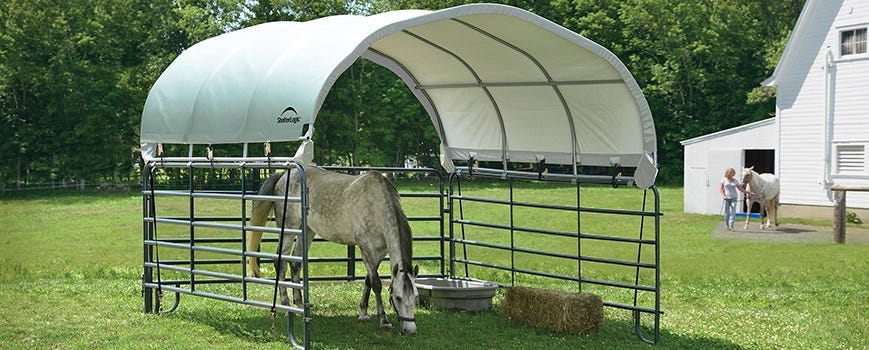
Why Livestock Shelters Help to Protect Your Animals
One of the best ways to keep your animals cool is by providing them with a shaded, well-ventilated area for resting and grazing. A quality shade solution helps them cool down outdoors and helps prevent sunburn. Let’s look at a pair of shade solutions offered by ShelterLogic Group.
Run-in Sheds
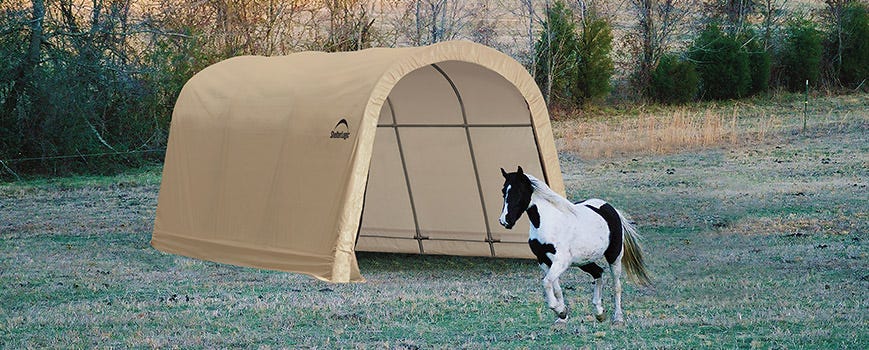
Horses and livestock have freedom when they are out to pasture. However, the pasture can also make these animals vulnerable to the elements like the sun and the heat. A run-in shed can give your animals easy access to shade and a place to cool off when they’re out to pasture. A run-in shed, also known as a loafing shed, is structure that can be placed anywhere an animal needs shade. The horses, goats, sheep, cows, and other animals can use the run-in shed to escape the elements, including the sun and the heat.
The run-in sheds manufactured and sold by ShelterLogic are tunnel-like structures that have a powder-coated steel frame and a heavy-duty fabric cover. Since they are open at both ends, your horses and other livestock and walk in one end and exit the other without needing to turn itself around. While animals will instinctively look for a place to cool off, that’s not always the case. Placing fresh water and feed such as hay inside a run-in shed can help ensure that your livestock will use the shelter.
Corral Shelters
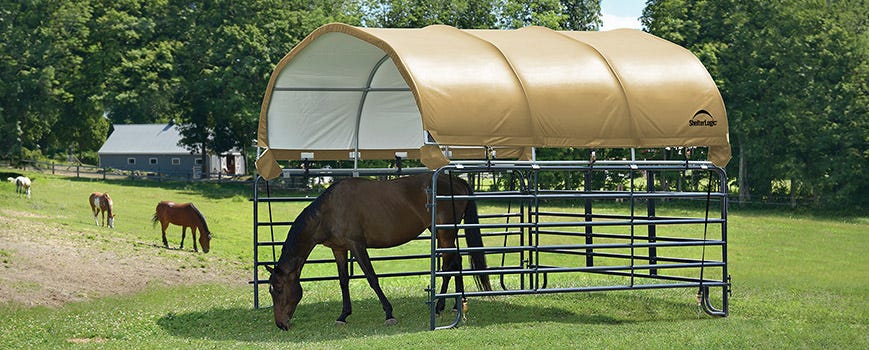 ShelterLogic also manufactures and sells unique shelters that can be used in conjunction with fences and corral gates. Like a run-in shed, a Corral Shelter give farm animals protection from the elements and can be set up wherever they need shade. The Corral Shelter has a frame made of sturdy steel and a fabric cover that securely fits most panel tubes to provide reliable shade protection anywhere in the field.
ShelterLogic also manufactures and sells unique shelters that can be used in conjunction with fences and corral gates. Like a run-in shed, a Corral Shelter give farm animals protection from the elements and can be set up wherever they need shade. The Corral Shelter has a frame made of sturdy steel and a fabric cover that securely fits most panel tubes to provide reliable shade protection anywhere in the field.
Keeping Your Animals Safe is a Top Priority
When you run a farm or care for animals, keeping them safe is your number-one priority. Understanding the effects of the summer sun and heat on horses and livestock is paramount to their health. While water, proper diet, and suitable air circulation is essential to their health, you cannot underestimate the importance of a shade solution. To learn more about the horse and livestock shelters ShelterLogic Group offers, please click the button below.

